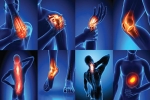Home »
Blog » Back Pain
| Stem Cell, PRP, Acupuncture in Queens & Long Island, New York
Back Pain | Stem Cell, PRP, Acupuncture in Queens & Long Island, New York
Tags: Back Pain | Posted on: 23-Dec-2020 | No of views: 3590 Relief from Joint Pain and Inflammation in the Neck and Back. Facts and Information - The facet joints are found in the spine, where they connect the backbones to each other. They allow the spine to bend and twist. Like a knee or hip, facet joints have cartilage between the bones and a fluid-filled capsule to allow for smooth movement. When damaged, facet joints can cause debilitating pain in the neck or back. This condition is known as Facet Syndrome. It may occur due to an injury, overuse, or the onset of an inflammatory condition.
Read more
Tags: Back Pain | Posted on: 18-Dec-2020 | No of views: 3805 A foam roller also called a styrofoam cylinder, may help you reduce pain, tender spots, and stiffness in your neck and upper back. Keep the following tips in mind when you use a foam roller to stretch your muscles or perform a self-massage. Roll Out Your Knots - Slowly roll the foam roller until you find a tender spot or trigger point. Then apply gentle, steady pressure to that spot until the pain subsides, but no longer than 60 seconds.
Read more
Tags: Back Pain | Posted on: 16-Dec-2020 | No of views: 3658 Accurate Diagnosis and Powerful Pain Relief - Epidural injections are commonly used to diagnose and treat conditions such as a herniated disc or spinal stenosis, which can cause pain in the back, leg, neck, or arm. An epidural injection may include a numbing medicine that helps determine the source of the pain and a corticosteroid medication to reduce inflammation. Physicians at National Spine & Pain Centers, with specialized training in pain management, can accurately diagnose, target, and relieve the source of your pain to help you return to an active lifestyle.
Read more
Tags: Back Pain | Posted on: 11-Dec-2020 | No of views: 4744 When red-hot sciatica pain sears down your leg, using ice therapy can be uniquely effective in immediately soothing the pain. The key is to know when and how to use ice therapy for the best results:
Use Ice Therapy as Soon as Your Pain Starts - Ice or cold therapy is recommended when your sciatica is acute or flares up. Cold therapy typically works by Increasing your tolerance to pain and slowing down the speed at which your nerves send pain signals to the brain; Acting locally, as opposed to taking oral pain-relieving medications, which have a body-wide (systemic) effect
Read more
Tags: Back Pain | Posted on: 09-Dec-2020 | No of views: 3784 Acupuncture is a complementary medical technique that has proven to be effective for chronic back, neck, shoulder, and joint pain, as well as osteoarthritis and headaches/migraines. As one of the oldest healing practices in the world, acupuncture dates back thousands of years as a form of traditional Chinese medicine. Practitioners stimulate specific points on the body—most often by inserting hair-thin needles into the skin. We combine modern technology of the West with the ancient wisdom of the East to provide you with acupuncture treatments as a natural way to relieve pain and improve your health.
Read more
Tags: Back Pain | Posted on: 07-Dec-2020 | No of views: 4679 Chronic pain can be caused by many different factors. Often conditions that accompany normal aging may affect bones and joints in ways that cause chronic pain. Other common causes are nerve damage and injuries that fail to heal properly. Some kinds of chronic pain have numerous causes. Back pain, for example, may be caused by a single factor or any combination of these factors: Years of poor posture, Improper lifting and carrying of heavy objects, Being overweight, which puts excess strain on the back and knees, A congenital condition such as curvature of the spine, Traumatic injury, Wearing high heels, Sleeping on a poor mattress, No obvious physical cause, Ordinary aging of the spine (degenerative changes)
Read more
Tags: Back Pain | Posted on: 04-Dec-2020 | No of views: 3572 Herniated disc pain in your lower back can range from a mild ache to a shock-like pain that radiates into your leg. While most herniated discs gradually start to feel better within a few weeks, many common activities may inflame and worsen the pain. Here are a few activities to avoid. Sitting Too Much - Sitting puts more stress on your spinal discs, especially when slouching forward in a seat. To minimize pain from a herniated disc in the lumbar spine (lower back), try to stand up, move around, or lie down when possible.
Read more
Tags: Back Pain | Posted on: 02-Dec-2020 | No of views: 3378 Stem cell therapy is an innovative treatment for joint pain offered at Precision Pain Care and Rehabilitation. For many patients, stem cell therapy is a viable alternative to invasive surgery for pain relief. There is a lot of misleading information in the public sphere about what exactly stem cell therapy is, so make sure you get the facts before you decide whether or not this treatment is for you.
Read more
Tags: Back Pain | Posted on: 30-Nov-2020 | No of views: 3590 Our approach to pain management largely depends on what’s causing the pain. When it’s a byproduct of an ongoing health condition, our focus is finding a good pain management strategy to keep discomfort at a minimum. But when it’s rooted in an isolated event or injury, we can focus not only on treatment but also the prevention of chronic pain. In situations like this, it’s worth asking – can we keep acute pain from becoming chronic?
Read more
Tags: Back Pain | Posted on: 27-Nov-2020 | No of views: 3658 A neck spasm occurs when your neck muscles suddenly, involuntarily tighten. Your neck becomes painful and stiff, likely affecting the ability to turn your head. An awkward neck movement or stress-related muscle tension is often what triggers a neck spasm. Here’s a quick guide to relieving the pain. Stretch - Try to relax your spasming neck muscles. Stretching may be an effective method to loosen and soften your muscles, which tighten and seize up during a spasm.
Read more
Love this Post? Spread the World






















